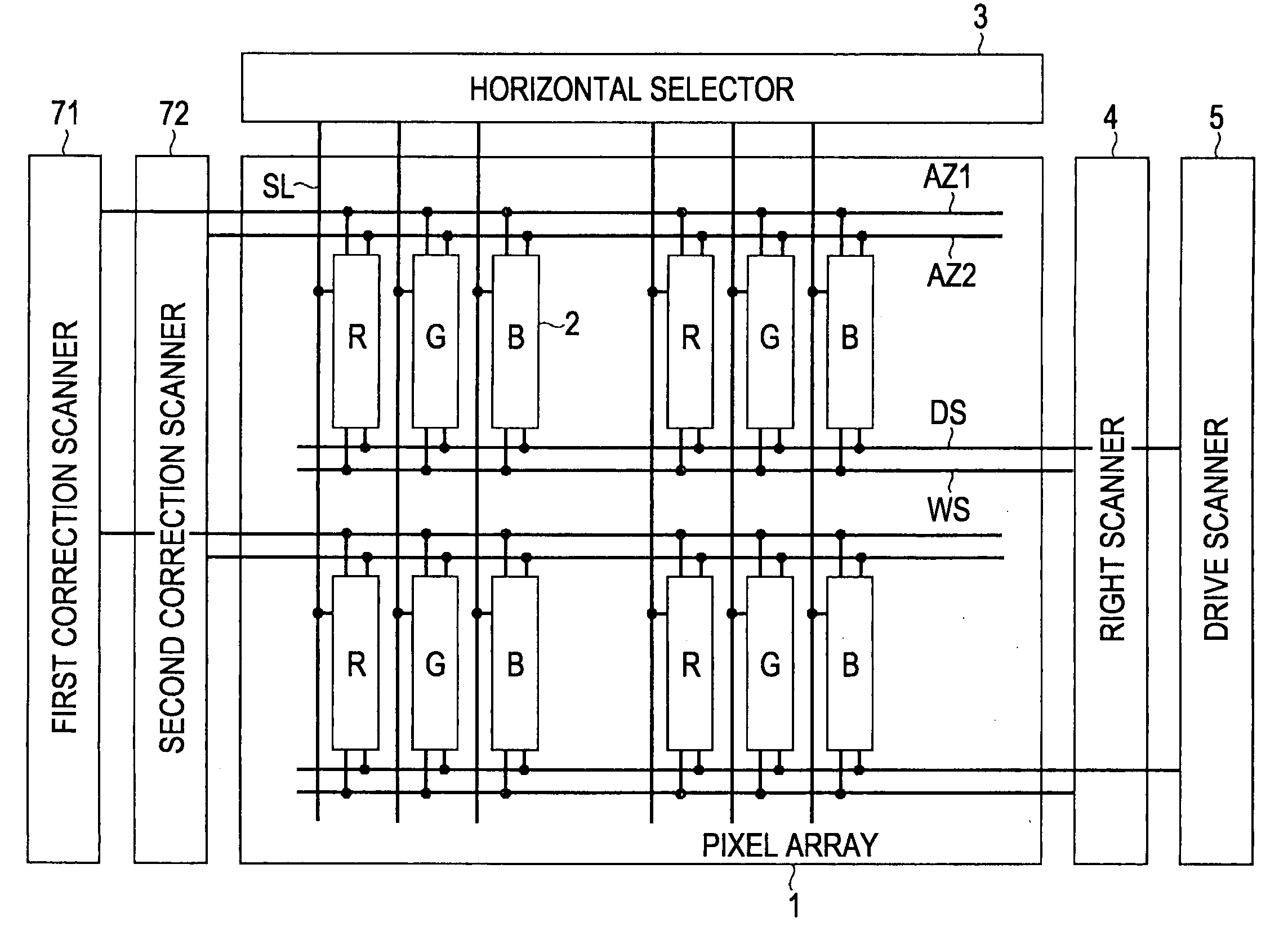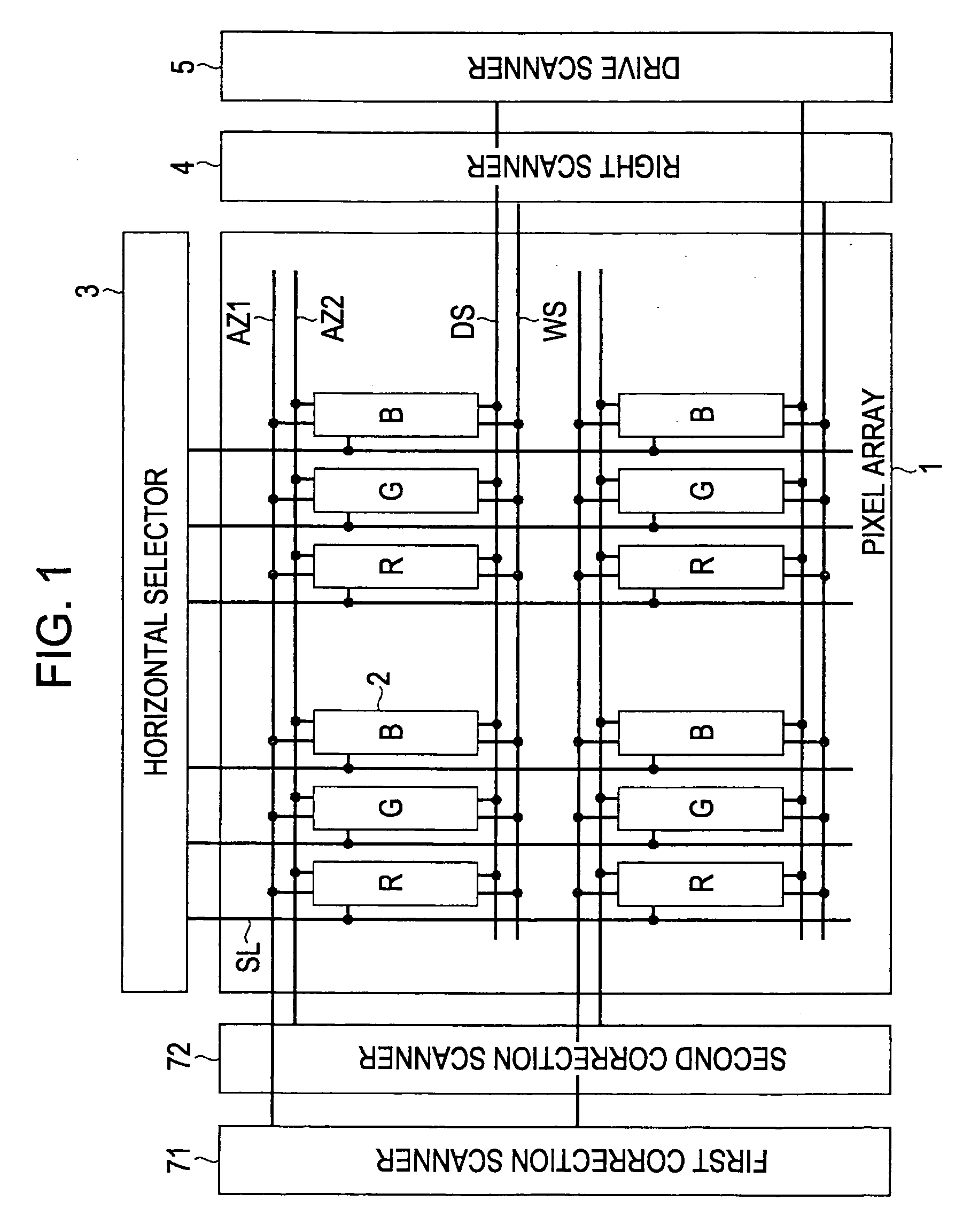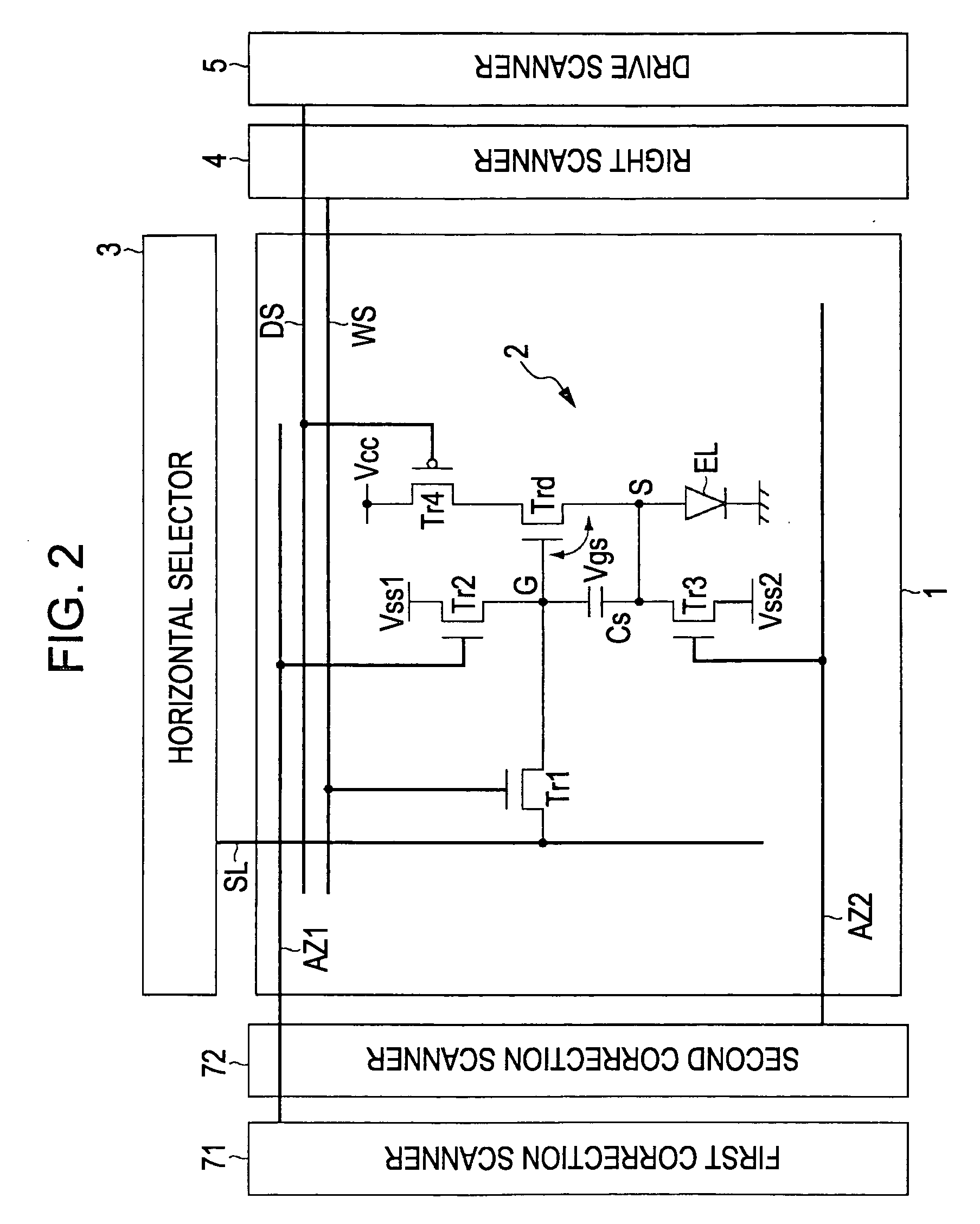Display apparatus, method of driving a display, and electronic device
- Summary
- Abstract
- Description
- Claims
- Application Information
AI Technical Summary
Benefits of technology
Problems solved by technology
Method used
Image
Examples
first embodiment
[0068]As shown in FIG. 5, in the present invention, the display apparatus basically includes a pixel array 1 and a driving unit adapted to drive the pixel array 1. The pixel array 1 includes scanning lines WS extending in the row direction, signal lines SL extending in the column direction, and pixels 2 disposed in an array form at respective intersections of the scanning lines WS and the signal lines SL. Each pixel 2 includes, at least, a sampling transistor Tr1, a driving transistor Trd, a light emitting element EL, and a storage capacitor Cs. The control terminal (the gate) of the sampling transistor Tr1 is connected to one of the scanning lines WS. The current terminals (the source and the drain) of the sampling transistor Tr1 are respectively connected to one of the signal lines SL and the control terminal (the gate G) of the driving transistor Trd. One of the current terminals (the source and the drain) of the driving transistor Trd is connected to the light emitting element E...
second embodiment
[0102]FIG. 10 is a timing chart provided for an explanation of the operation of the circuit shown in FIG. 9. In FIG. 6, for ease of understanding, similar reference symbols to those in the timing chart shown in FIG. 8 are used. As shown in FIG. 10, at time T1, the switching transistor Tr4 is turned off to switch the pixel 2 from the light emission state into the non-light emission state. Thereafter, at time T1a, the scanning line DS2 is switched to the low level to turn off the switching transistor Tr6. As a result, the light emitting element EL is electrically disconnected from the driving transistor Trd. Thereafter, in a period from T2 to T3, a preliminary process is performed. Furthermore, in a period from T3 to T4, the threshold voltage correction process is performed. In a period from T5 to T7, the image signal is written in the storage capacitor Cs. In this process, the mobility correction is performed in a period from T6 to T7. In these processes, the light emitting element ...
third embodiment
[0121]FIG. 14 is a timing chart provided for an explanation of the operation of the pixel circuit shown in FIG. 13. This timing chart is basically similar to that shown in FIG. 12 and similar parts to those in FIG. 12 are denoted by similar reference symbols. As shown in FIG. 14, at time T1, the switching transistor Tr4 is turned off, and thus the non-light emission period starts. At time T1a, the switching transistor Tr6 is turned off thereby electrically disconnecting the light emitting element EL from the driving transistor Trd. Note that the turning-off of the switching transistors Tr4 and Tr6 may be performed in the reverse order. Thereafter, the threshold voltage correction process, the image signal sampling process, and the mobility correction process are sequentially performed. Then, at time T7, the sampling transistor Tr1 is turned off to disconnect the gate G of the driving transistor Trd from the signal line SL. Thus, the preliminary process, the correction processes, an...
PUM
 Login to View More
Login to View More Abstract
Description
Claims
Application Information
 Login to View More
Login to View More - Generate Ideas
- Intellectual Property
- Life Sciences
- Materials
- Tech Scout
- Unparalleled Data Quality
- Higher Quality Content
- 60% Fewer Hallucinations
Browse by: Latest US Patents, China's latest patents, Technical Efficacy Thesaurus, Application Domain, Technology Topic, Popular Technical Reports.
© 2025 PatSnap. All rights reserved.Legal|Privacy policy|Modern Slavery Act Transparency Statement|Sitemap|About US| Contact US: help@patsnap.com



